Arguably the city’s most picturesque waterfront park, Riverside Park – which hugs the shoreline of the Hudson River on the Upper West Side of Manhattan – is one of only eight designated scenic landmarks officially recognized by the City of New York.
Riverside Park has a long history of expansion and renovation.
In 1865, a parks commissioner – William R. Martin – proposed that the underdeveloped and rocky terrain along the Hudson River between 72nd and 125th streets be transformed into a public park.
After the land was acquired in 1872, Frederick Law Olmsted – one of Central Park’s designers – conceptualized a riverfront tree-lined park which flowed around the area’s natural topography, along with the construction of an adjacent road (Riverside Drive).
From 1875 to 1910, many designers, architects, and horticulturalists brought Olmstead’s original idea to fruition, tying the site aesthetically to the Hudson River Valley with rolling pathways, promenades, English garden-inspired landscaping, and beautiful views of the river.
During the next several decades, the park expanded to fulfill the growing needs of the city, adding 132 acres and extending its Northern border to 155th street where statues and monuments were erected, and grand entranceways and retaining walls were added.

In the 1930s, additional improvements were made including covering over tracks where the New York Central Railroad West Side Line once ran, extending the park further to the waterfront, creating recreational facilities, the 79th Street Rotunda and Marina, esplanade and the Henry Hudson Parkway.
In 1991 – after he failed to convince the city to let him build Manhattan’s largest skyscraper where the abandoned Penn Central Railyard lay (between 72nd and 59th streets) – developer Donald Trump was forced to change his plans and agreed to build smaller buildings and a 21.5-acre park on the land instead. With six phases of development starting in1998 and ending in 2007, Riverside Park South and Trump Place were added to the Riverside Park landscape, including recreational fields, courts and piers, plazas, and a historic train locomotive on display to honor the area’s original purpose.
Today, Riverside Park is a multi-purpose, 330-acre parkland with many distinct features, sections and levels for all types of recreational activities, beautiful and varied vegetation, historic landmarks, 15 playgrounds, 4 dog runs, many unobstructed panoramas and access to the Hudson River – all with a railroad in a tunnel running underneath it.
Here are some favorite destinations on your travels throughout Riverside Park.

North Waterfront
At its northern tip, the park extends right to the shoreline of the Hudson River. From there, visitors can enjoy the vast open lawn, or take a walk to the Little Red Lighthouse – on the National Register of Historic Place – in Fort Washington Park.
Bikers of all abilities can pick up Riverside Park’s scenic bike trail beginning at 158th street, and eventually wind all the way down to the southern tip of the city in Battery Park.
Pier 1 at 70th Street
The 795-foot recreational Pier 1 at 70th street offers easy access to the water for both viewing and recreational purposes. Visitors can fish off the pier, or launch a canoe or kayak – for which lessons are available. The pier is also perfect just for a stroll, enjoying beautiful harbor vistas.
In the summer, watch a movie with your family on the Pier as part of their Pier 1 Picture Show series. In the Fall, don’t miss the annual West Side County Fair with lots of entertainment, sideshow performers, games, vendors, aerialists, rides and more.

Recreational Facilities
There are various courts and fields throughout the park for many different sports and recreational activities.
Clay tennis courts and hard courts are available at 96th street and 119th street, respectively.
There is a large recreational section between 101st and 111th streets with a skate park featuring ramps, half-pipes, and different skating surfaces. There are also courts for basketball, handball, and sand volleyball available, and fields for soccer and baseball.
The park also offers many fitness classes such as pilates and yoga.
91st Street Community Garden
Volunteers, known as “The Garden People” maintain this beautiful garden on the middle level of the park between 90th and 91st street. This garden is in bloom from Spring to late Fall and offers a colorful variety of blossoms and plantings. You might recognize it from the feature film, You’ve Got Mail.

Statues And Monuments
Riverside Park is home to many monuments, memorials, and statues. From the Soldiers And Sailors Monument at Riverside Drive and 89th street (where Shakespeare workshops are held throughout the summer) to the whimsical Hippopotamus interactive play structure at 91st street, to the American Memorial To Six Million Jews and more, each piece holds a significant place in the city’s history and culture.
Bird Estuary
The Riverside Park Bird Sanctuary is between 116th and 124th street, occupying 10 acres, in and around which 177 species of birds have been spotted over the past several decades, averaging around 120 yearly. You can usually always spot blue grosbeak, hooded and morning warblers, summer tanagers, Baltimore Orioles, nine species of sparrows, along with many park nesters, and more.
Don’t forget to check out the Bird Drip – the park’s manmade watering hole where many species gather to water and clean themselves.
Ellington In The Park
When want to take a break from all there is to see and do in Riverside Park, enjoy a leisurely meal or spirit at Ellington In The Park at 105th street. Watch the sun set over the Hudson River as you enjoy the relaxed and casual ambiance, live entertainment, delicious food, fine wine and specialty cocktails.
Look for next week’s blog, “Set Sail: Boat Restaurants of NYC.”








